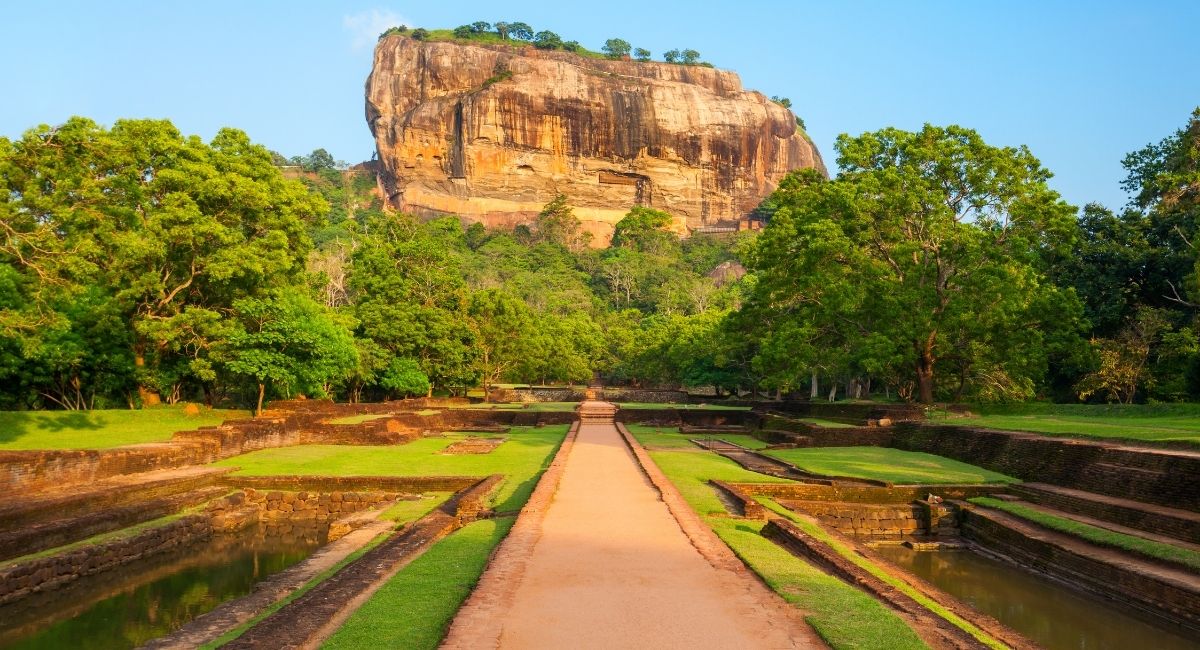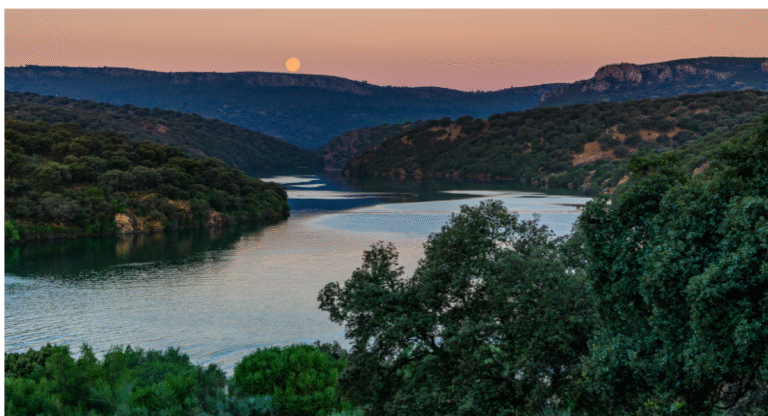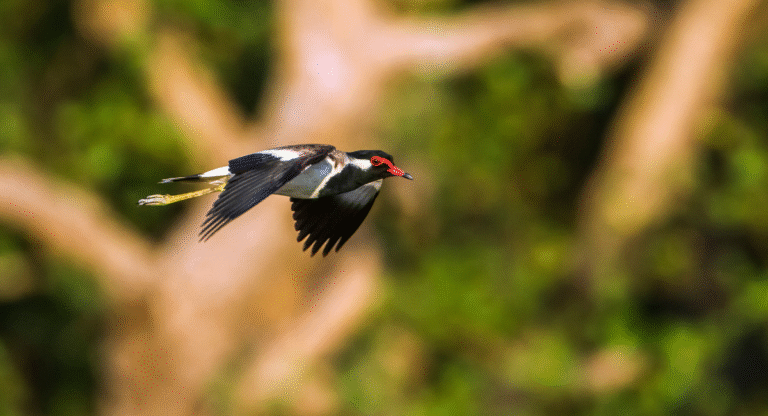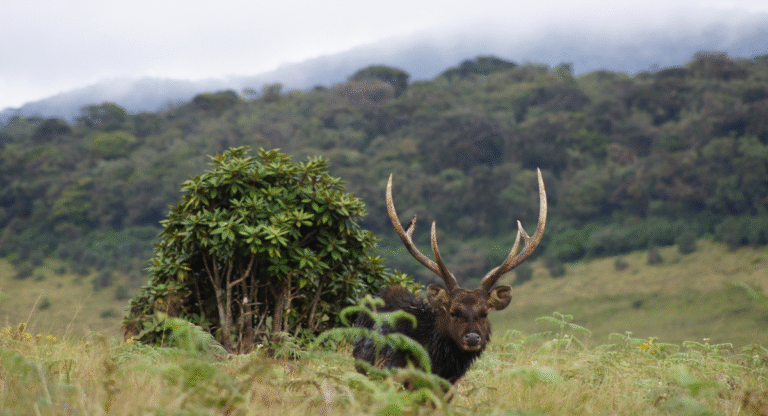1. The Myth and Majesty of Lion Rock: An Introduction to Sigiriya’s Epic Story
Rising majestically from the central plains of Sri Lanka, the colossal column of granite known as Sigiriya or Sinhagiri—the Lion Rock—is more than just a geological formation. It is a monument to human ambition, an “engineering marvel of ancient architecture” that has been called the “eighth wonder of the world”. This sheer-sided outcrop, which towers some 180 meters above the surrounding landscape, is a UNESCO World Heritage Site, recognized for its profound historical significance and as one of the best-preserved examples of ancient urban planning.
This report embarks on a journey to explore the many facets of Sigiriya, from its dramatic and contested past to its unparalleled architectural and artistic wonders. It will not only recount the powerful story of the king who built it but also delve into the academic debates that challenge the traditional narrative, revealing a site of even greater complexity and mystery. Furthermore, it will serve as a comprehensive guide for visitors, offering practical advice for a truly unforgettable climb and suggesting a curated itinerary to explore the broader “Cultural Triangle” of which Sigiriya is the heart.
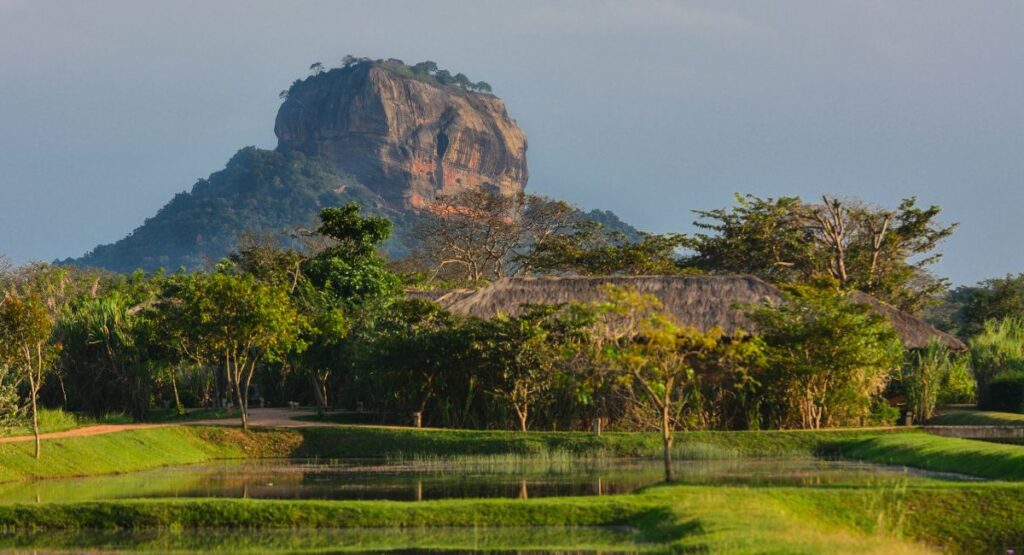
2. A Citadel of Intrigue: The Contested History of King Kasyapa
The Reign of the Patricide King
The most widely circulated and dramatic account of Sigiriya’s origins is found in the ancient Sri Lankan chronicle, the Cūḷavaṃsa. According to this narrative, the site’s creation is intrinsically linked to the tragic reign of King Kasyapa I, who ruled from 477 to 495 CE. As the eldest son of King Dhatusena, Kasyapa was born to a non-royal consort and was thus not the rightful heir to the throne. That birthright belonged to his younger half-brother, Moggallana, who was the son of a royal queen.
Driven by a desire for power and aided by the king’s disaffected army commander, Migara, Kasyapa staged a palace coup and seized the throne. His brutal act of patricide—having his father imprisoned and later immured in a wall—earned him the name
Pithru Ghathaka Kashyapa (“Kasyapa the Patricide”). Disgraced among his subjects and fearing a vengeful attack from Moggallana, who had fled to South India, Kasyapa abandoned the traditional capital of Anuradhapura. He sought refuge on the “unassailable” Sigiriya rock, transforming it into a seemingly impenetrable fortress and royal palace. The king’s reign lasted a mere 18 years before Moggallana returned with an army. Faced with defeat, Kasyapa chose not to be captured, instead committing ritual suicide with his own sword. After his death, Moggallana returned the capital to Anuradhapura, and Sigiriya was converted back into a Buddhist monastery.
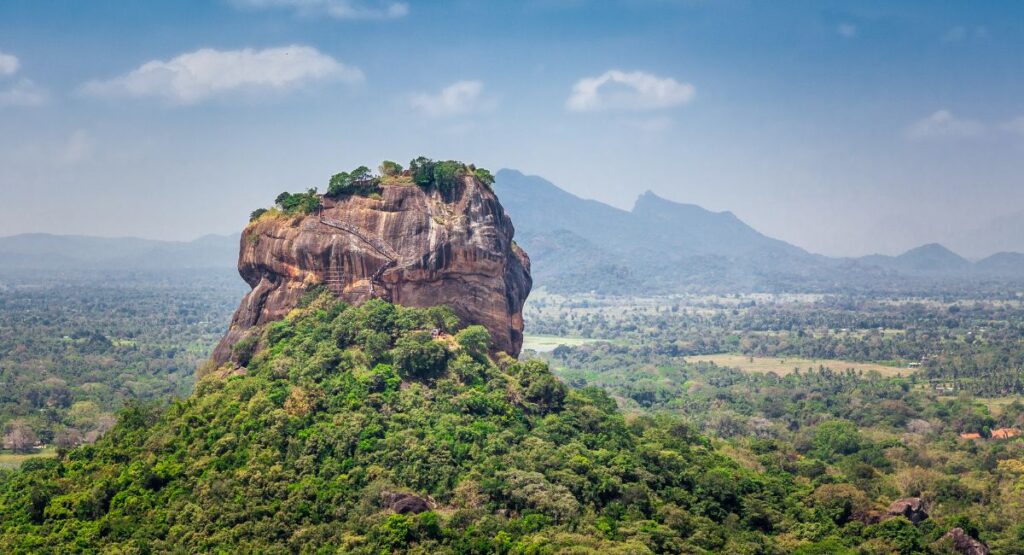
The Great Debate: Fortress, Monastery, or Mythical Abode?
While the story of the patricidal king is a powerful and popular explanation for Sigiriya’s existence, it is not the only one. A growing body of archaeological and academic research reveals a much more complex history, challenging the traditional narrative. Evidence suggests that the area around Sigiriya has been inhabited since prehistoric times, with rock shelters and caves used by Buddhist monks from as early as the 3rd century BCE. The site’s return to a monastery after Kasyapa’s death further fuels the debate over its true purpose during his short reign.
This academic discourse is central to understanding Sigiriya’s mystique. Dr. Raja De Silva, a former Archaeological Commissioner, has argued that the traditional Kasyapa-fortress narrative is biased and lacks sufficient historical corroboration outside of a single source, the Mahavamsa. He posits that Sigiriya was not a palace fortress at all, but a vast Mahayana-Theravada Buddhist monastic complex. This reinterpretation offers a new lens through which to view the site’s most celebrated features. For example, De Silva argues that the renowned frescoes, traditionally believed to depict the king’s concubines or harem ladies, actually represent the revered goddess Tara. This theory also connects the site’s design to a mythological Buddhist city of gods, Alakamanda, the abode of the god of wealth, Kubera, which Kasyapa was said to have used as his inspiration. This alternative view transforms Sigiriya from a king’s paranoid refuge into a devotional monument. The ongoing debate demonstrates that Sigiriya is not a simple historical artifact but a living mystery, continuing to yield new interpretations and understandings that enrich its story.
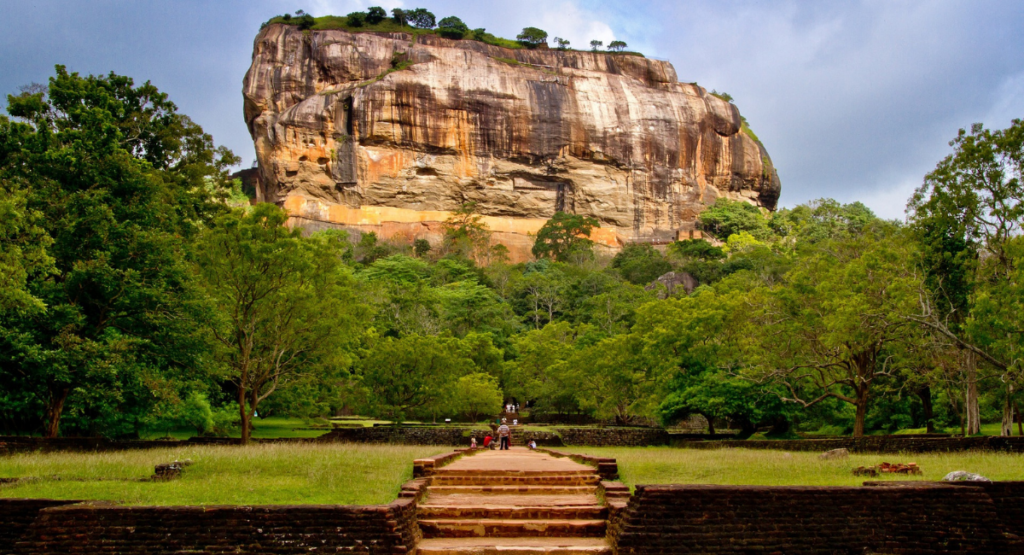
3. Engineering a Kingdom in the Clouds: The Wonders of the Sigiriya Complex
The World’s Oldest Landscaped Gardens
At the base of the rock lies a series of magnificent gardens, recognized as some of the oldest landscaped gardens in the world. The Sigiriya complex comprises three distinct garden types: the symmetrical and formal Water Gardens, the more organic Boulder Gardens with winding paths, and the ascent-guiding Terraced Gardens. The most remarkable feature of these gardens is their sophisticated hydraulic system, a testament to the unparalleled engineering skills of the time.
The fountains within the Water Gardens operate on a simple “pressure-and-gravity principle,” channeling water from a reservoir at a higher elevation through a network of underground pipes. Remarkably, these fountains are still functional, with spouts made of perforated limestone plates that continue to spurt water after heavy rainfall, nearly 1,500 years after their creation. This level of ingenuity was not an isolated feat; it was the “zenith of Sri Lankan hydraulic engineering advancements” and a culmination of generations of experience in building large-scale reservoirs and other complex structures. The engineers of Sigiriya did not invent this technology but rather adapted and perfected it for a new, aesthetic purpose, showcasing the depth and continuity of ancient Sri Lankan civilization.
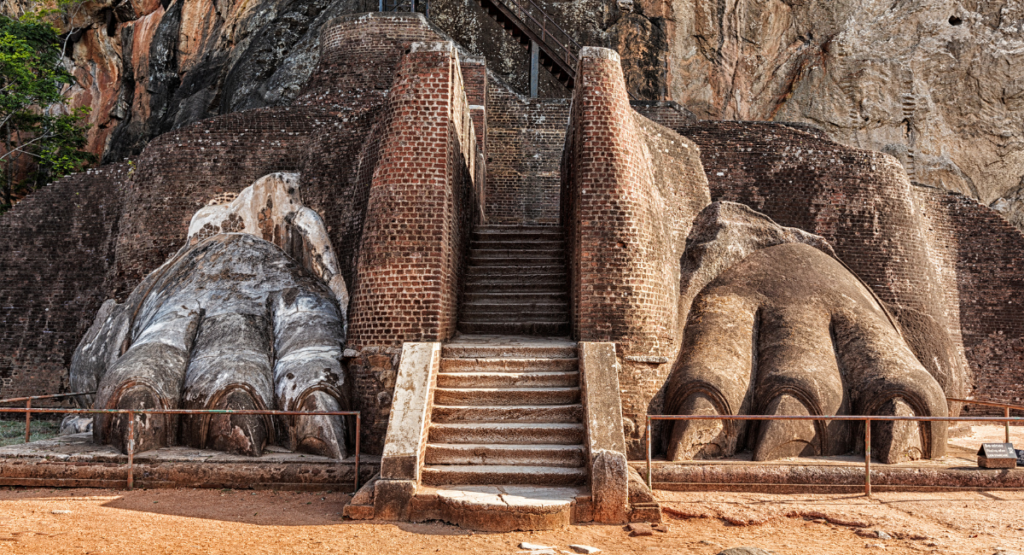
Climbing the Art Gallery
The journey to the summit is a pilgrimage through history and art. The ascent begins through the Boulder Gardens, where visitors can see rock shelters once occupied by monks, and continues through the Terraced Gardens. Along the way, the breathtaking artistry of the ancient builders is on full display.
- The Sigiriya Frescoes: A spiral metal staircase leads to a sheltered recess on the western face of the rock, where the magnificent Sigiriya Frescoes are found. Dating back to the 5th century, these vibrant murals are among the oldest and best-preserved frescoes in Sri Lanka. They depict female figures, often portrayed as emerging from clouds and carrying flowers, rendered with exquisite detail and vibrant colors. The identity of these women remains a subject of debate, with interpretations ranging from celestial nymphs or goddesses to the royal ladies of King Kasyapa’s court. To protect this invaluable heritage, photography is strictly prohibited in the area.
- The Mirror Wall: An Ancient Visitor’s Book: The path continues alongside the Mirror Wall, a unique architectural feature that offers a window into the past. Originally, the wall’s surface was polished with a mixture of lime, egg white, beeswax, and wild honey to create a reflective sheen that allowed the king to see his own reflection and catch glimpses of the frescoes from a distance. Over the centuries, from the 7th to the 13th, this wall became a canvas for ancient visitors. The wall is inscribed with over 1,800 pieces of prose and poetry, which are not simple graffiti but are considered the “earliest known forms of literary Sinhala”. These writings provide a fascinating historical record, with visitors—many from the social elite, including royalty and clergy—expressing their awe at the frescoes and the surrounding landscape. This collection of inscribed poems and commentary reveals that Sigiriya was more than just a palace; it was an important pilgrimage site and perhaps one of the earliest documented tourist destinations in Asia. The very act of visiting and responding to the beauty of the site became a cultural “rite of passage” for centuries, embedding the experience of Sigiriya into the collective memory of the nation.
The Final Ascent: From Lion’s Paw to Sky Palace
The final, and most iconic, stage of the climb begins at the Lion Gate. While the original brick-built lion’s head and body have long since vanished, the two enormous forepaws remain, giving the rock its name, Sinhagiri or “Lion Rock”. From this point, a series of daunting metal staircases leads to the summit.
The plateau at the top, covering 1.6 hectares, offers a breathtaking 360-degree panoramic view of the surrounding countryside. Though only the foundations of Kasyapa’s “sky palace” remain, visitors can discern the complex layout and the ingenious rainwater harvesting system that sustained life at this height. This network of cisterns, cut directly into the rock, was a pioneering example of ancient water conservation and management, capable of holding hundreds of thousands of gallons of water.
4. The Great Debate: Sigiriya vs. Pidurangala
For many modern travelers, the choice between climbing Sigiriya Rock and its nearby neighbor, Pidurangala Rock, is a central dilemma. While Sigiriya offers a deep dive into history and architecture, Pidurangala provides a different, but equally rewarding, experience. The following comparison helps to clarify the distinct features of each climb.
| Feature | Sigiriya | Pidurangala |
| Entrance Fee | 5,000 LKR (approx. $15 USD) | 500 LKR (approx. $2.50 USD) |
| Climb & Difficulty | Easier, with well-maintained paths and metal staircases. Can be physically tiring in the heat. | More challenging and rugged, with scrambling required at the top. A more adventurous hike. |
| Historical Significance | A UNESCO World Heritage Site with an extensive history, a museum, and ruins of a palace and fortress. | A Buddhist monastery with a reclining Buddha statue and less grandeur. |
| Crowds | Extremely popular and often very crowded, especially during peak season. | Less crowded and offers a more peaceful, quiet atmosphere. |
| Views | Panoramic vistas of the surrounding countryside and the extensive gardens from the top. | Provides the perfect, close-up, iconic view of Sigiriya Rock itself, especially beautiful at sunrise or sunset. |
For a truly comprehensive experience of the area, many travelers choose to visit both sites, starting with Sigiriya to appreciate its historical depth and then heading to Pidurangala for the unique and serene view of the Lion Rock itself.
5. Your Essential Guide to Climbing Sigiriya
Getting There
Sigiriya is a central hub within Sri Lanka’s Cultural Triangle. Travelers can reach the area from major cities via public transport. Direct buses run from Kandy, with the journey taking about two hours. From Colombo, one can take a train to Habarana and then a short tuk-tuk ride to Sigiriya. These options are both cost-effective and provide a glimpse into local life.
When to Visit and What to Expect
The best times to climb Sigiriya are early in the morning or late in the afternoon to avoid the intense heat and humidity of the day. The period from December to April and July to October is considered the peak tourist season. The climb is moderately difficult and requires a reasonable level of fitness, with a steep stair-climb that can take an hour or more. It is not fully accessible for those with mobility issues.
A critical safety tip involves the hornets, which are active from May to November and are sensitive to loud noises. Visitors are advised to remain quiet in designated areas to avoid disturbing the nests. Essential items to bring include proper hiking shoes, a hat, sunglasses, sunscreen, and plenty of water to stay hydrated.
A Step-by-Step Guide to the Sigiriya Climb
| Stage | Highlights | Estimated Time |
| Main Entrance & Water Gardens | Cross the moats and explore the serene, geometrically laid-out water gardens with their intricate, gravity-fed fountain systems. | 15-20 Minutes |
| Boulder Gardens | Wander through the natural landscape, passing ancient rock shelters and monastic ruins, some with Brahmi script inscriptions. | 15-20 Minutes |
| Terraced Gardens | Begin the challenging part of the climb up massive brick stairways, leading to a platform for a rest and scenery views. | 15-20 Minutes |
| Mirror Wall & Frescoes | Walk along the highly polished mirror wall, with its ancient graffiti, before climbing the spiral staircase to view the exquisite frescoes. | 15-20 Minutes |
| Lion’s Paw Terrace | Reach the mid-level terrace and marvel at the colossal paws of the ancient lion structure, the entrance to the final ascent. | 10-20 Minutes |
| The Summit | End the climb at the summit, where the ruins of the Sky Palace and rock-cut cisterns offer a breathtaking panoramic view. | 15-25 Minutes |
| Descent | Follow the path back down, which takes a different route to avoid congestion. | 30-45 Minutes |
6. Beyond the Rock: A Curated Itinerary for the Cultural Triangle
Sigiriya serves as the ideal base for a more extensive exploration of Sri Lanka’s Cultural Triangle, a region teeming with historical and natural wonders.
- Dambulla Cave Temple: A short drive from Sigiriya, this UNESCO World Heritage Site is an essential stop. It is a 2,000-year-old temple complex comprising five caves adorned with over 150 statues and frescoes of Buddha. Visitors should also see the massive Giant Golden Buddha statue at the base of the rock.
- National Parks: The area is renowned for its wildlife, particularly the annual “Gathering” of elephants. A jeep safari in either Minneriya or Kaudulla National Park is a thrilling experience, offering opportunities to see herds of elephants, along with other wildlife like sambar deer, leopards, and a vast array of bird species.
- Local Experiences: For those seeking more authentic immersion, a traditional village tour provides a glimpse into the local way of life. Other recommended activities include a cooking workshop to learn about Sri Lankan cuisine or a hot air balloon ride for a unique aerial perspective of the rock and its surrounding landscape.
7. Preserving a National Treasure: The Impact of Tourism
While tourism is a vital component of the local economy, attracting millions of visitors each year and cementing Sigiriya’s status as a top destination, it also presents significant challenges to the preservation of this ancient site. The concept of “over visitation” is a serious concern at Sigiriya, particularly during peak months when as many as 15,000 people may attempt to climb the rock.
This level of overcrowding creates bottlenecks on the narrow staircases, raises safety concerns, and ultimately diminishes the visitor experience. The sheer volume of foot traffic puts immense pressure on the delicate ecosystem and structural integrity of the site. The Sri Lankan government and various conservation bodies have implemented measures to combat these issues, including limiting visitor numbers and investing in preservation efforts. The success of these initiatives relies on the cooperation of tourists. By practicing sustainable tourism—such as traveling during off-peak hours and respecting the site’s regulations—visitors can help ensure that Sigiriya remains a beautiful and inspiring destination for generations to come.
8. Conclusion: An Enduring Legacy
Sigiriya stands as a powerful testament to the ingenuity and artistic brilliance of ancient Sri Lankan civilization. Its unique blend of human design and natural forms, its sophisticated water systems, and its unparalleled artistic and literary heritage have rightly earned it global recognition. The ongoing academic debate over its true purpose only adds to its allure, transforming it from a mere historical site into a living mystery. Whether viewed as the fortress of a tragic king or the serene abode of ancient monks, Sigiriya’s enduring legacy as a symbol of national pride and an engineering genius remains unshakable. It is a place that invites travelers not only to climb its stairs but to step back in time, contemplate the mysteries of the past, and appreciate the timeless beauty of a kingdom in the clouds

